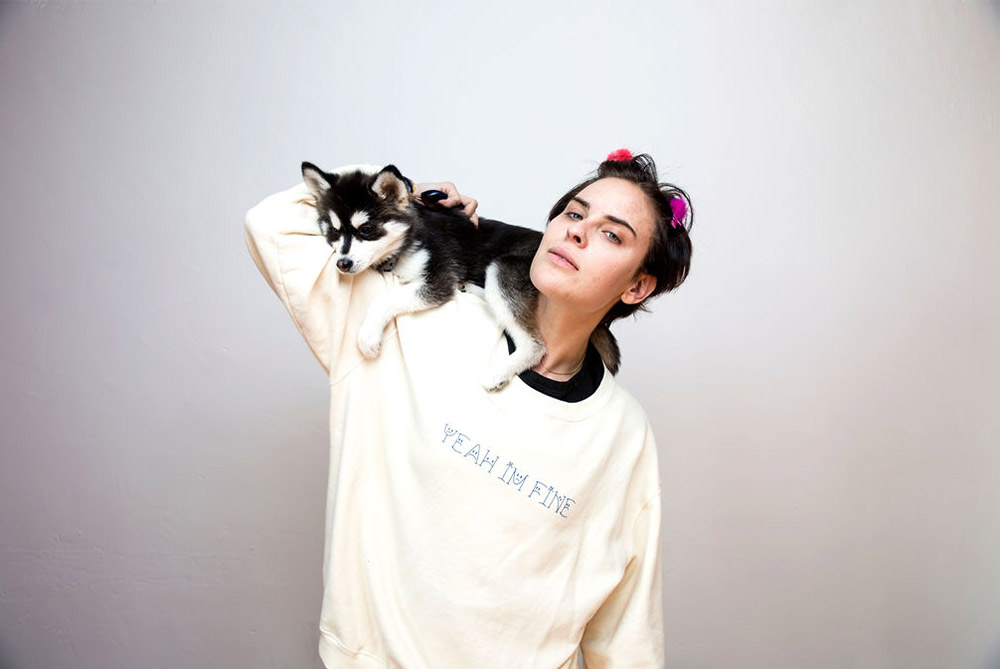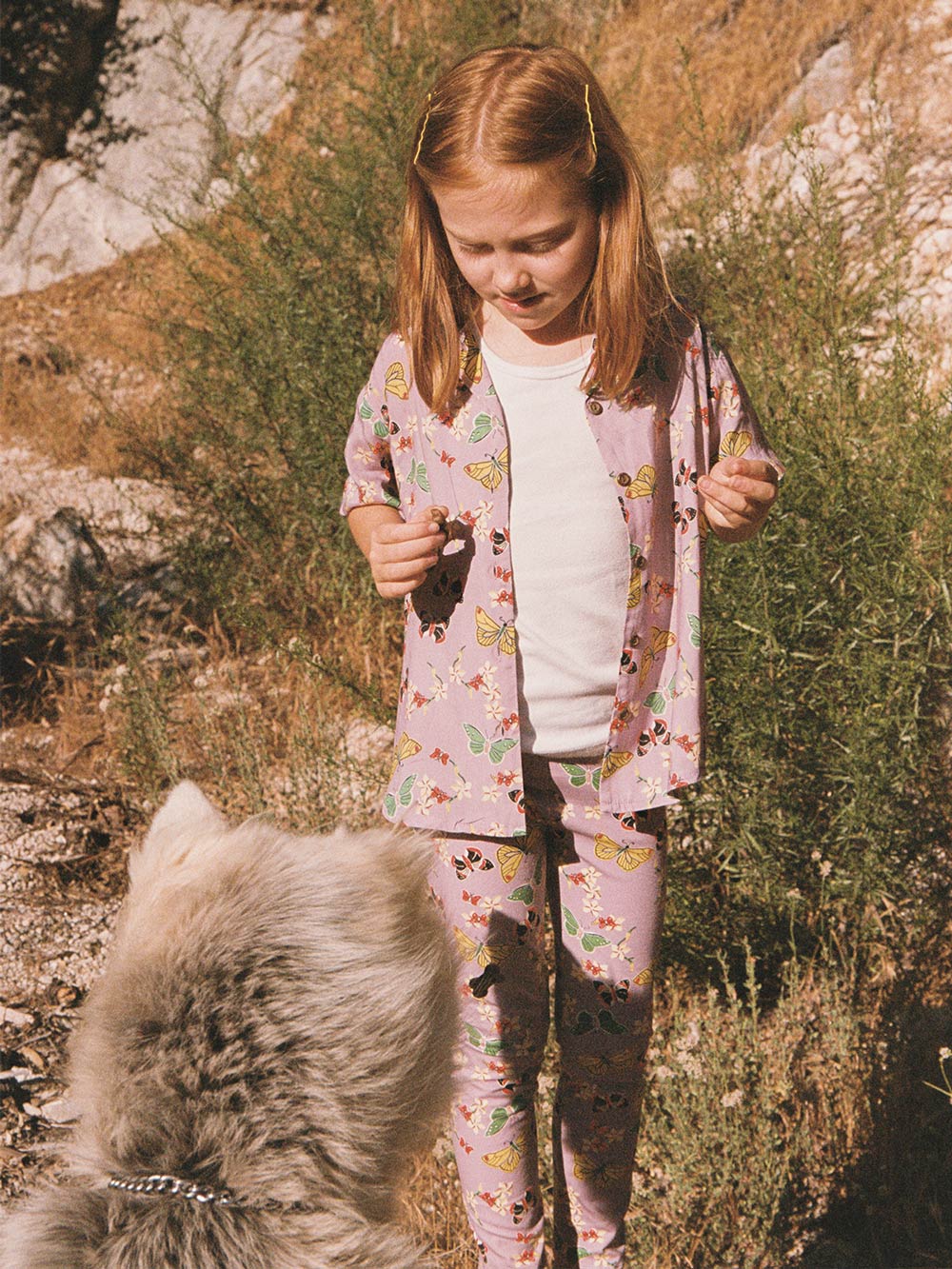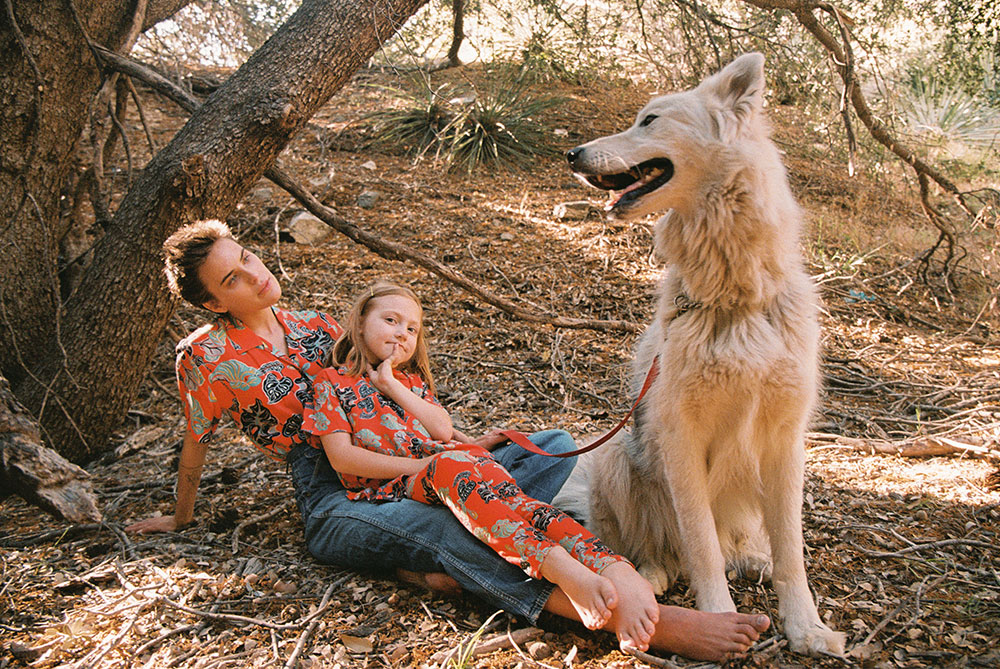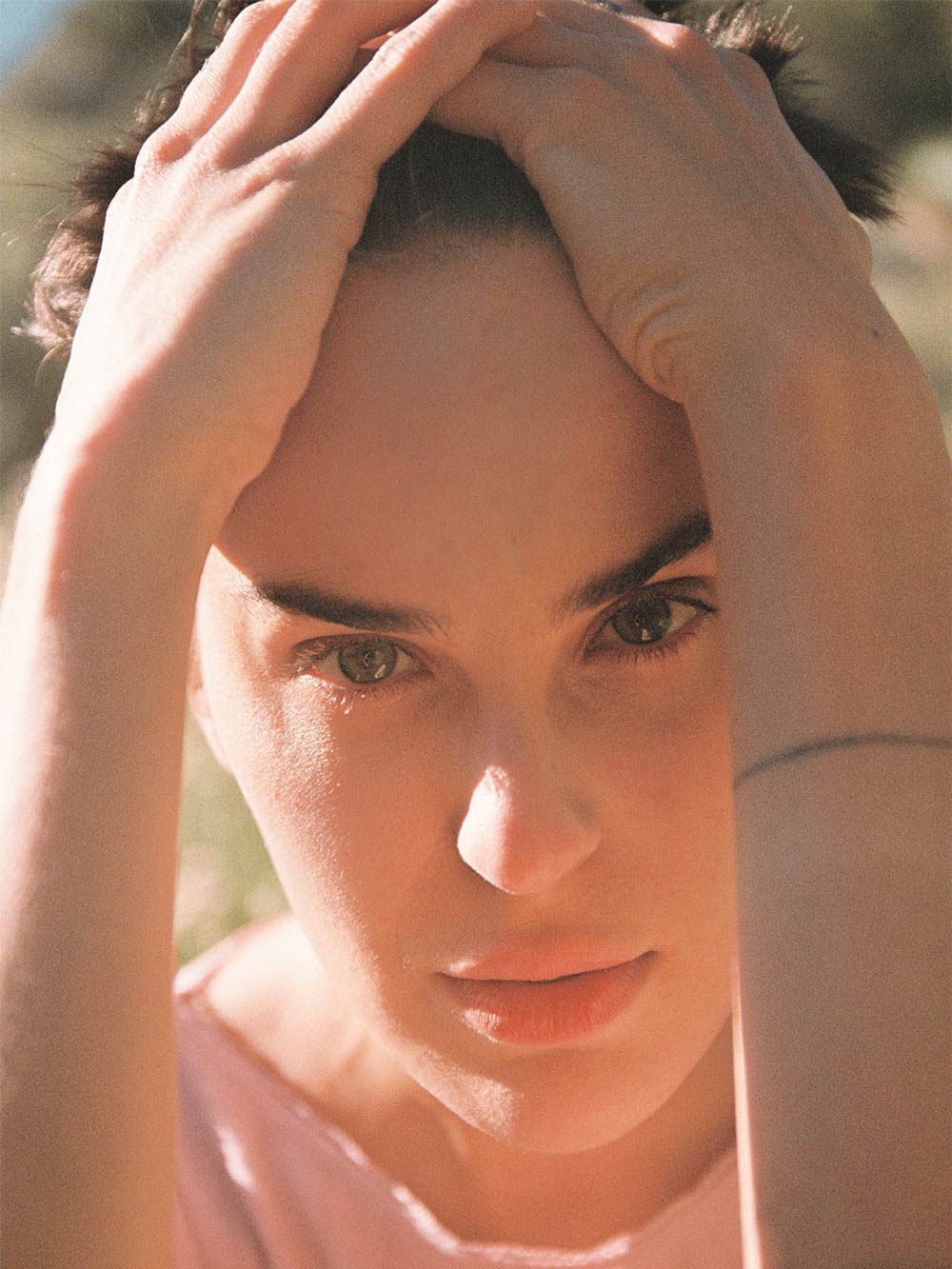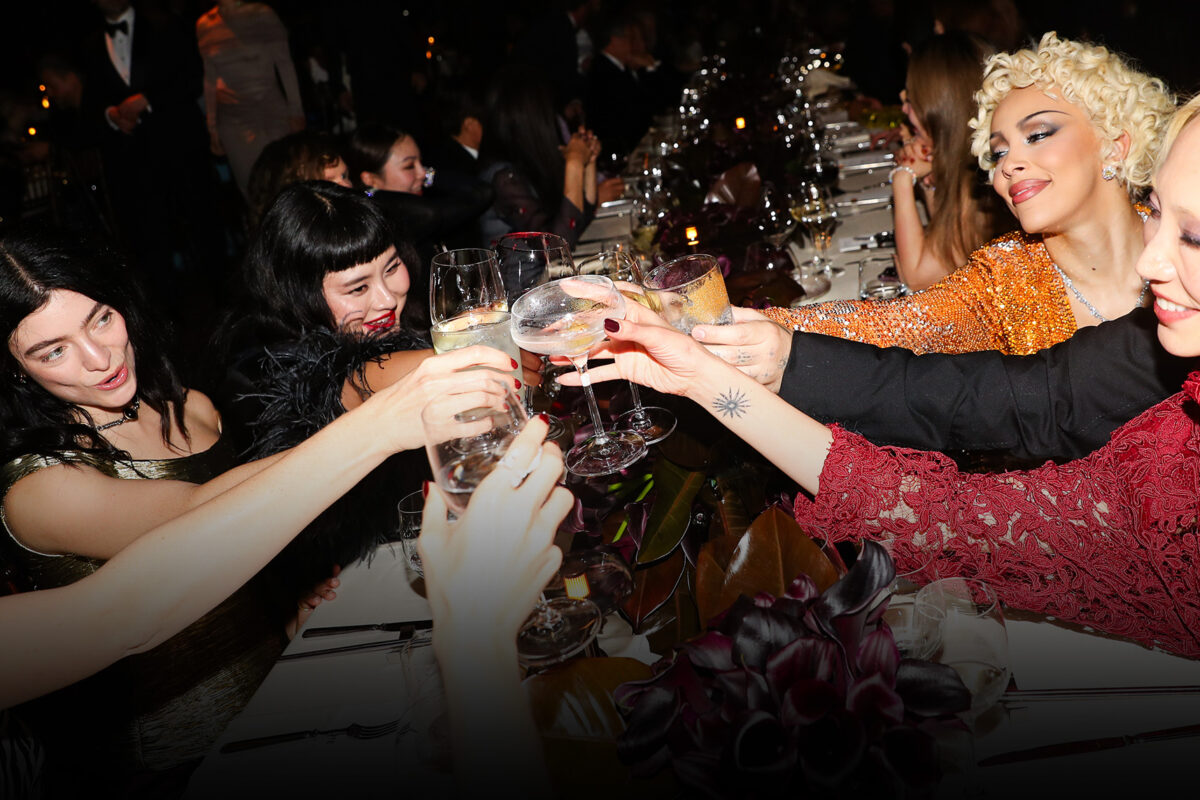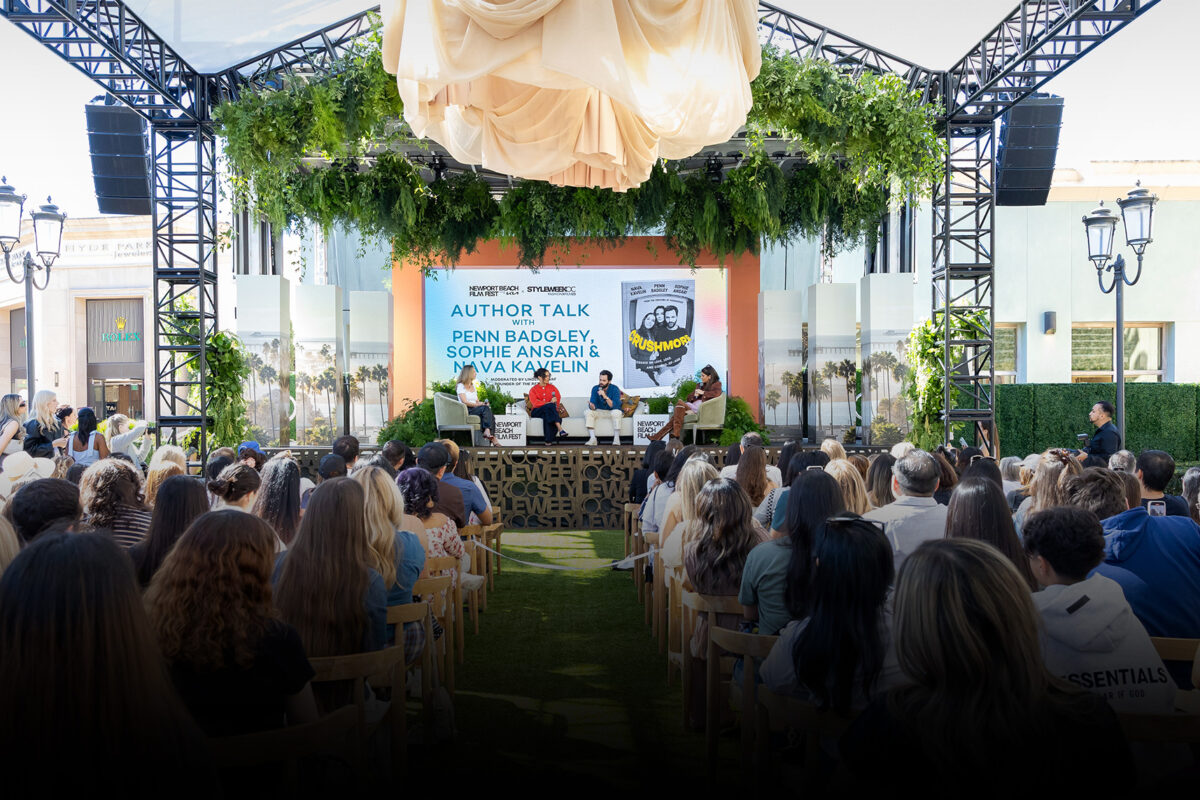The designer daughter of Demi Moore on why her brand does things differently and how social media can be used for good
Words by JAKE HEDDAEUS
Tallulah Willis didn’t have to look far for inspiration for the first full collection of her namesake brand. Having been born the daughter of movie stars Demi Moore and Bruce Willis, the parental unit provided ample references for personal style to fill up the mood board for Summer 2020. A quick trip to Mom’s closet served as an aesthetic escape into a world of feminine frocks and vintage gems, while childhood memories of dad wearing Hawaiian print shirts made a lasting impression.
Tallulah launched Wyllis earlier this year as a line of sweatshirts and T-shirts that showcase the designer’s own artwork. As much a mental health advocate as designer, the original offering featured abstract doodles and handwritten slogans that explore the ailments of the mind. Building on its initial success, the brand debuts on July 22 an expanded collection that includes colorful apparel for women and children.
Tallulah Willis is something of an open book, regularly sharing on Instagram moments from her turbulent path to self-acceptance
The new offerings are intended to explore life’s more jovial moments and emanate joy: vintage-inspired shirts, dresses and pants are covered in florals and seashells that are synonymous with the ease of coastal living. Moms and their little ones can match in woven button-ups featuring vividly hued butterflies — perhaps a metaphor for Tallulah’s own metamorphosis, given the 26-year-old designer’s well-documented evolution as it pertains to her mental health.
TALLULAH WILLIS with her dog Linus. Photo by Devon Hutchins.
With an audience of 328,000 on Instagram, Tallulah is something of an open book, regularly sharing moments from her turbulent path to self-acceptance and self-discovery. Earlier this month she posted about celebrating six years of sobriety, and another post reflected on her struggle with body image. “There is never going to be a point of good enough; there is, however, chance of peace. A stillness to the festered storm of discontentment,” she shared in a caption.
C caught up with Tallulah to discuss the inspiration behind her new collection, her thoughts on mental health and social media, and what she’s doing to take care of herself these days.
• • • • •
Tell us about the inspiration behind the collection.
In a way, it’s a marriage of both of my parental fashion influences. Growing up, my dad always had a massive collection of these 1940s, 1950s printed Hawaiian shirts, and he would have three that were in rotation, and they were his favorites. I have the best memories of him putting them on with a fedora. And then my mom has been collecting vintage her whole life. Actually, the blue dress that we have in the collection is based off of a dress that she’d had since she was 16. So I kind of took those two things of these really bright, whimsical patterns that I saw growing up, as well as some of these bodies and shapes that my mom had around, especially those really sweet, feminine, nipped-waist, full-skirt pieces, and I really loved the idea of bringing together those two elements. This collection is very bright. It’s very fun, very loud. It’s definitely not hiding in the corner.
Photo by Natasha Ribeiro-Austrich.
The collection goes up to a size 3X. Why was it important that the collection be inclusive?
I think, for me, a huge point of inspiration is this idea of how we make vintage inclusive. In general, vintage sizing is fundamentally smaller. Some of the shoes you get from the ’20s onwards are so narrow, they look like baby feet. I got so excited when I was going to a vintage store, and I would paw through the clothes, and there’s always that sinking, disheartening feeling if something doesn’t fit or it’s not in your size. And I really wanted to find a way to reverse that — how do we make these beautiful pieces accessible for all bodies, all shapes? So that’s what I set out to do.
Was that difficult from a production standpoint?
When the idea was first conceived, there were a few fundamentals, and inclusive sizing was there from the first moment I knew I wanted to make clothes. It was non-negotiable. Whatever needed to happen to make it happen, that was the first priority. Just in terms of resources and budgeting, I’d rather have a smaller collection that could have a broader size range. I’ve learned that sometimes when people are doing extended sizing that it’s just a grading-up system from the straight-sized clothing, and they just hope for the best. So we have not done that. We have done multiple fittings. We take such care and such time to fit these pieces, to make sure that as many bodies feel as comfortable as possible in our clothes. I never wanted the moment where someone was looking at my collections and my designs, and if they love them, feeling like it didn’t work for them because of sizing.
Photo by Natasha Ribeiro-Austrich.
What drew you to designing kids’ clothing?
Oh, I mean, I love the babies. I can’t wait for the babies, for myself. I have two little sisters. I think that branching out into matching “mommy and me” sets, as well as the sweatshirt that says “I’m worthy of love and care,” it just felt really important for me to include them in what I’m trying to do. I think that at the earliest point possible, if they can be lifted up and boosted up, and be encouraged to find that self-compassion, self-love, then I think that’s amazing.
Who are some mentors who helped guide you in developing a brand?
My dear friend and manager, Rachel [Finley], through and through. We’ve been friends since I was 18, and we have always been close, but when we started working together, it was just like a beautiful symbiotic match made in heaven. And she is so knowledgeable about this process, and I was coming to it very — I don’t want to say naive, but I would say I kind of … I was at Fashion 101, I knew what I liked. I knew design, but I hadn’t a clue how to get from A to B, and she just guided me and held my hand, and the education that I have been able to receive throughout the past 14 months has been invaluable to me. … I truly don’t believe any of this would have gotten off the ground without her.
How did growing up between Idaho and Los Angeles inform your style?
I have the real privilege of growing up in massive amounts of nature. Having a backyard that connected to a river, and spending most of my summers jumping around in the mud and in ponds, and hiking, and it was really surrounding me. And I think there was this kind of little cowgirl that was very much first within me, but then on the other side of it, spending the majority of my upper adolescence in Los Angeles and getting a lot of contemporary influences. I change my aesthetic on a daily basis. It’s whatever mood I’m feeling. Boyish and tomboy, super girly, if it’s super vintage, if it’s super modern. I kind of can’t keep myself straight. It’s sort of the ADD of fashion. And I wanted to kind of bring a little bit of that in [to the collection]. … I’ve always been really, really inspired by really organic imagery, really soft lines, soft curves and prints. It’s definitely a lot of floral and botanical, and just what the earth has given us. I think that when you marry the shapes that we see in our world with really bright poppy colors, it’s just kind of a match made in heaven.
Photo by Natasha Ribeiro-Austrich.
What are some of your favorite California landscapes?
First and foremost, I love water. I love the beach. I don’t go enough as I should, but I do. I especially love the kind of forest-y beaches. It’s funny, I’ve never been to Big Sur, which is at the tippy, tippy top of my wishlist. Every time I talk to someone about it who knows me well, who’s been there, [they tell me:] “This would be your heaven.” I’ve done Palm Springs, but the dry heat makes me feel like a lizard frying on the sand. I’m much more of a Northern California, mossy forest, redwood, kind of dewy nature, elfin feeling — I would say that’s definitely more my soul vibe. But at the same time, I have such an appreciation for particularly Palm Springs architecture, like the amazing houses from the ’60s. I recently have gotten obsessed with real estate and looking at architecture. I know this is a bit of a tangent from fashion, but I do think design comes into play. So I’ve been deep-diving on the Palm Springs midcentury houses world.
You’re very open about your mental health journey.
When I really decided within myself that this was a career path I wanted to pursue, there were some fundamentals. One being size inclusivity, and then the other really being mental health advocacy. I have personally really, really struggled in my own mental health journey. I’ve had the privilege of access to professionals and healers and people who have really supported me on that journey through my own ups and downs, and real moments of lows, of feeling kind of paramount that I was alone, that I was the only one who might be feeling this pain. And what’s been so beautiful and illuminating is understanding that there is a network of understanding through people who share this, and who also go through this, and that actually, no one is alone.
Have you worked that into your designs?
It was very, very important to me that we add a tag to each garment that has the national suicide hotline and the national mental health hotline, because I just felt like I could provide the ease of access to that. If one person is in a low place and scrambling, and turning their sweatshirt or their shirt or their dress or their pants inside out, and you see that tag. And we also emblazoned the words “You’re not alone” above those numbers, because I just wanted to really cement that meaning. And particularly with the Fletcher collection that we did, those are kind of the more advocacy-driven pieces, and they’re very straightforward. It’s less of an interpretive kind of marriage of mental health as the new collection, but I wanted the emblems of self-love and awareness on really this thing that plagues so much of us, and that really it’s such a universal issue of seeking a better self. I felt like there was an opportunity here for fashion to be a vehicle of healing. And I just wanted it to be part of that.
“I felt like there was an opportunity here for fashion to be a vehicle of healing. And I just wanted it to be a part of that”
TALLULAH WILLIS
Tell us about your partnership with The Loveland Foundation.
We are very, very lucky to have been able to align with The Loveland Foundation, founded by [Black writer, educator and activist] Rachel Cargle. They help support therapy and mental health for people of color, primarily Black women and girls. It’s just such a fantastic, unbelievable organization. And I’m so lucky that they are open to working with us and we’re donating 10 percent of all profits for the first month of the sales of this debut collection to them, as well as finding future opportunities to donate and work and partner with them.
Photo by Natasha Ribeiro-Austrich.
Rachel is an important voice right now in the anti-racism discourse. Have you been following her for a while?
I’ve been following her and was aware of The Loveland Foundation. I knew that I wanted to create a sort of a donation organization, charity-based alignment at some point with the brand. I wanted to always be synonymous with a kind of progressive movement forward. And I feel like when we were looking, and I started to see and learn a little bit more about Loveland, I just knew that that was the right fit. And then we were able to get on a call with them and speak to the people in their office, and it was so unbelievable, what they’re doing. I think that right now there are so many really, really powerful voices coming out. I’m doing a lot of learning and a lot of listening right now. … And I’m very, very grateful for the people that have been taking the time to write this content [on social media] and [for this type of] information to be accessible.
What’s your relationship with Instagram like?
I’ve absolutely had a love-hate relationship with the platform. It’s been one that at times I’ve probably used in not the healthiest way, where there’s definitely sort of a … certain validation, and letting myself kind of go to my more unrecovered parts of myself, and kind of falling into that loop. I started being very open about my sobriety when I got sober six years ago, especially on Instagram. And I found that the response that I got from people was really powerful, you know? And so I’ve maintained kind of a sense of transparency with how I use the platform and wanting to show the imperfect elements of myself. … For instance, I struggle with adult acne and have had this sort of massive turmoil with my skin for the past six years, and an element of OCD, which I’m diagnosed with, is this skin-picking. It’s this sort of obsessive … It’s a control element. It’s a way to sort of cope with anxiety, depression. And during the quarantine, I started posting about my skin-picking. I was just kind of doing it as a, “Hey, I’m doing this, and this is what it is.” And I had an influx of people just saying: “Thank you for creating visibility on this,” “Me too, I also do this,” “Thank you for talking about this,” “I didn’t know anyone else did this.” And so those are the moments that I think it can be a really beautiful thing. … If done with awareness, I think it creates a lot of community. It can create a lot of safety and a lot of calm.
Photo by Natasha Ribeiro-Austrich.
What role do you think social media plays in mental health?
I think that there’s a lot of comparing and despair that can come from Instagram, particularly for the younger generation. That really bothered me and really worries me. When I was young, I had my insecurity and my self-image, and my self esteem was mapped on imagery I saw. And that, I had to look a little harder to find that. And now it’s just out there, and I think that there’s a lot of room to sit there on your phone, especially when you’re maybe in a lower mood, not feeling great about yourself, and just sink even further when you’re seeing people who live the lives you may want, look the way you may want. They have the things you may want, and have the career you may want. It’s the fine line between inspiration and detrimental imagery, I think.
How are you taking care of yourself these days?
Early days during this pandemic and this quarantine, I lost myself a little bit. And I sort of instantaneously lost all the tools that I had thought were very secure in my tool belt of how you cope. And I went into some really outdated mechanisms. I did go on my phone. I was comparing, I was feeling really low and feeling really lost. I’m a very empathetic person. And I was just sort of holding the energy and the weight of the communal grief that was just happening all over our planet. And it was a lot to hold, and I’ll be honest, I definitely did some weird, random online shopping to distract myself. I had gotten a puppy right at the beginning of the pandemic, so spending time with him was actually really, really helpful, and just kind of pouring all my energy into my little cowboy, he’s my little chihuahua.
And I take a lot of baths. Water really helps me release the day. There were three to four baths a day going on. I got really deep into fantasy fiction book series. I was doing some drawings, some art to try to just understand my feelings and what was coming up. And I’m very lucky that I have a very communicative and vocal support system around me. I have an amazing partner. I was with my family. We’re all really big on open dialogue, and so there was a lot of space holding for the emotions that were coming up, which I’m very grateful for. But I think that even with that access to people around me, there still was a lot of work that just had to be done internally. I also shaved my head in quarantine. I think the word “simplification” and the word “acceptance” just really were paramount for me during this time.
Feature image: Styles from WYLLIS, a clothing line by TALLULAH WILLIS.
July 22, 2020
Discover more STYLE news.


